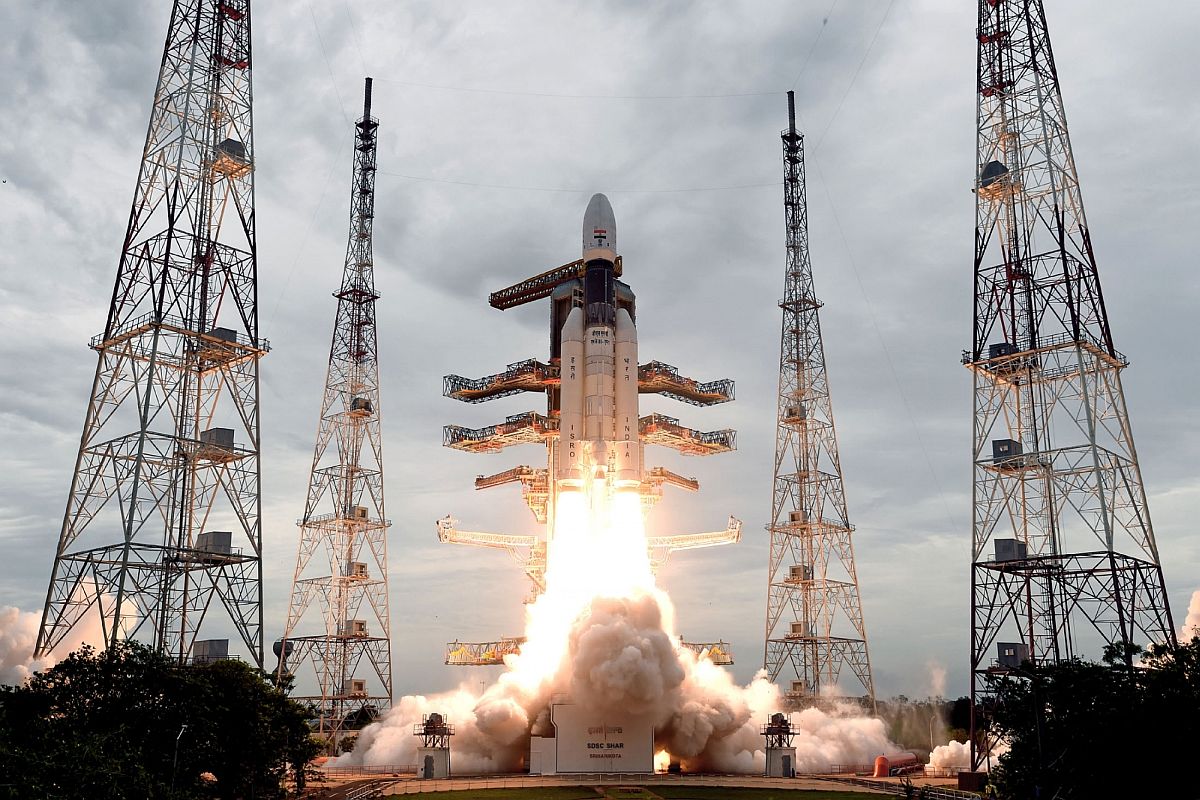NASA mission touches down on Moon aboard Firefly Aerospace lander
The data captured could also benefit humans on Earth by providing insights into how space weather and other cosmic forces impact Earth.
On September 7, Indian Space Research Organisation (ISRO) attempted a soft landing of Vikram on the uncharted lunar south pole, before losing communication with the lander.

Chandrayaan 2 (File Photo: IANS)
In the images captured during a latest flyby of its Moon orbiter, National Aeronautics and Space Administration (NASA) said it has found no evidence of Chandrayaan-2’s Vikram lander on the lunar region where India’s ambitious mission attempted a soft landing.
On September 7, Indian Space Research Organisation (ISRO) attempted a soft landing of Vikram on the uncharted lunar south pole, before losing communication with the lander. “The Lunar Reconnaissance Orbiter imaged the area of the targeted Chandrayaan-2 Vikram landing site on October 14 but did not observe any evidence of the lander,” Noah Edward Petro, the Project Scientist for the LRO mission, told news agency PTI.
Advertisement
Petro said that the camera team carefully examined the images and employed the change detection technique, using a ratio of an image from prior to the landing attempt to the one acquired on October 14.
Advertisement
This approach, he said, is used for finding new meteorite impacts on the Moon that also helped locate the recent Beresheet lander. “It is possible that Vikram is located in a shadow or outside of the search area. Because of the low latitude, approximately 70 degrees south, the area is never completely free of shadows,” John Keller, Deputy Project Scientist LRO Mission, told news agency PTI.
During its previous flyby, the LRO passed over the landing site on September 17 and acquired a set of high-resolution images of the area. The LRO team had not been able to locate or image the lander even then. Vikram attempted landing on a small patch of lunar highland smooth plains between Simpelius N and Manzinus C craters before losing communication with ISRO.
Our @LRO_NASA mission imaged the targeted landing site of India’s Chandrayaan-2 lander, Vikram. The images were taken at dusk, and the team was not able to locate the lander. More images will be taken in October during a flyby in favorable lighting. More: https://t.co/1bMVGRKslp pic.twitter.com/kqTp3GkwuM
— NASA (@NASA) September 26, 2019
Earlier this month, NASA’s Jet Propulsion Laboratory’s spacecraft system engineering manager Ann Devereaux said, “It is for the ISRO scientists to find out if Vikram will be able to talk to them or Chandrayaan’s orbiter to restore the link.” Devereaux made the statement at an event, held to mark the World Space Week of the UN General Assembly.
Noting that ISRO scientists have not given up on contacting the lander nearly a month after they lost contact with it in the early hours of September 7, Devereaux said they need to scan the data they got from it till the link snapped.
ISRO’s Istrac (satellite telemetry, tracking and command network centre lost contact with Vikram when it was descending and was just 2.1 km above the lunar service.
Though the Indian space agency has set up a national committee of experts to find what went wrong with Vikram to lose communication link with it in the last minute, it is yet to confirm its fate on the lunar surface near the South Pole in hostile conditions.
“We don’t really know what happened then and how it (Vikram) hit the moon’s surface and where,” Devereaux said and red flagged the mission’s scale, time and space, which are as good as gone once it falters.
Advertisement